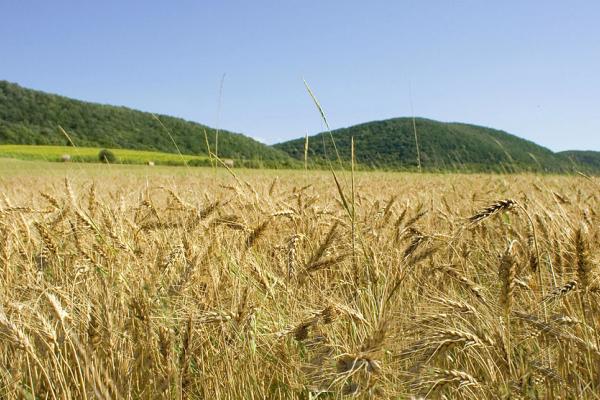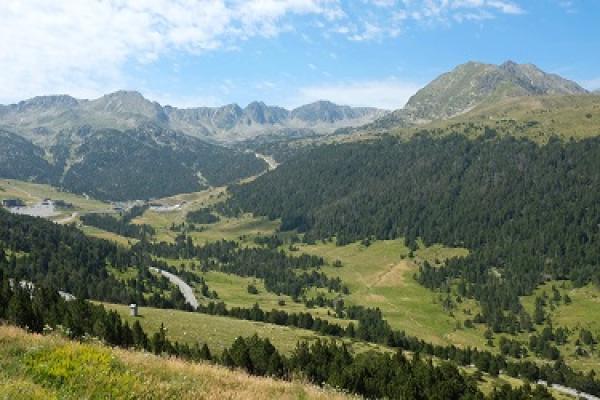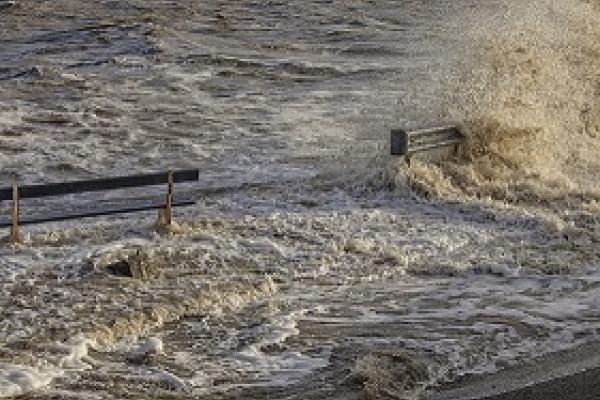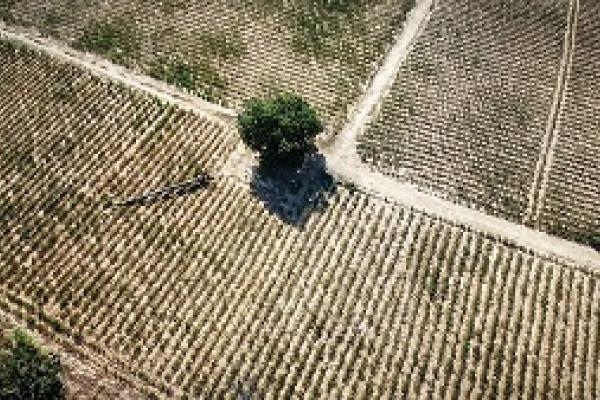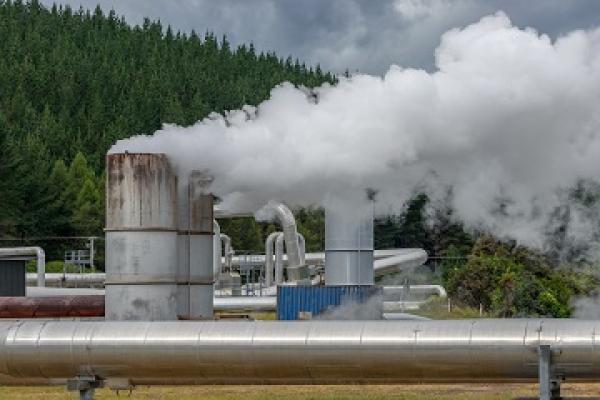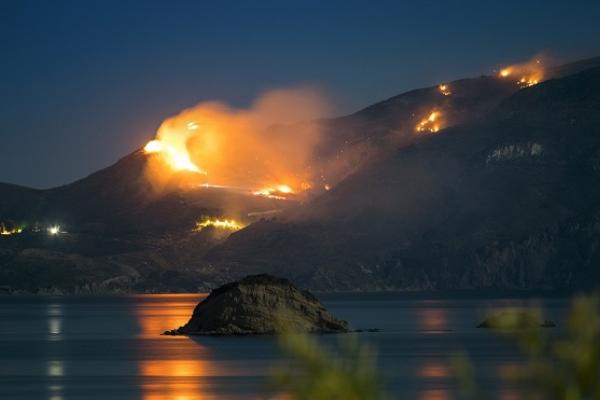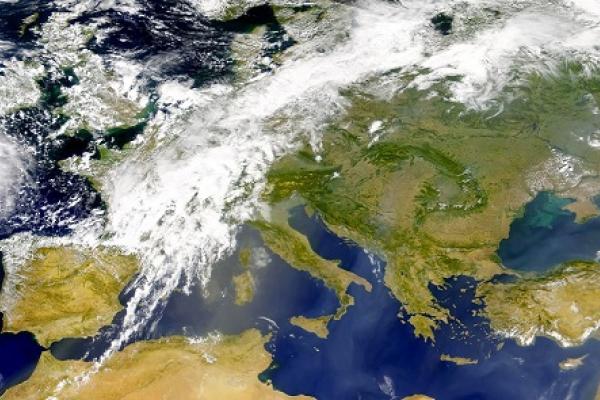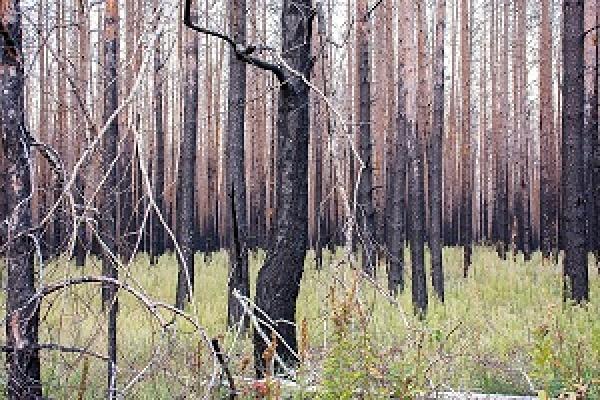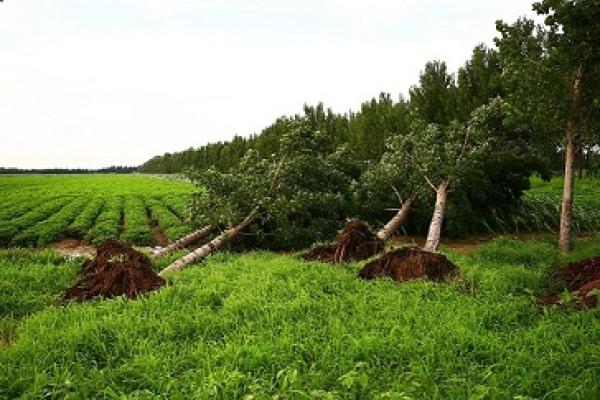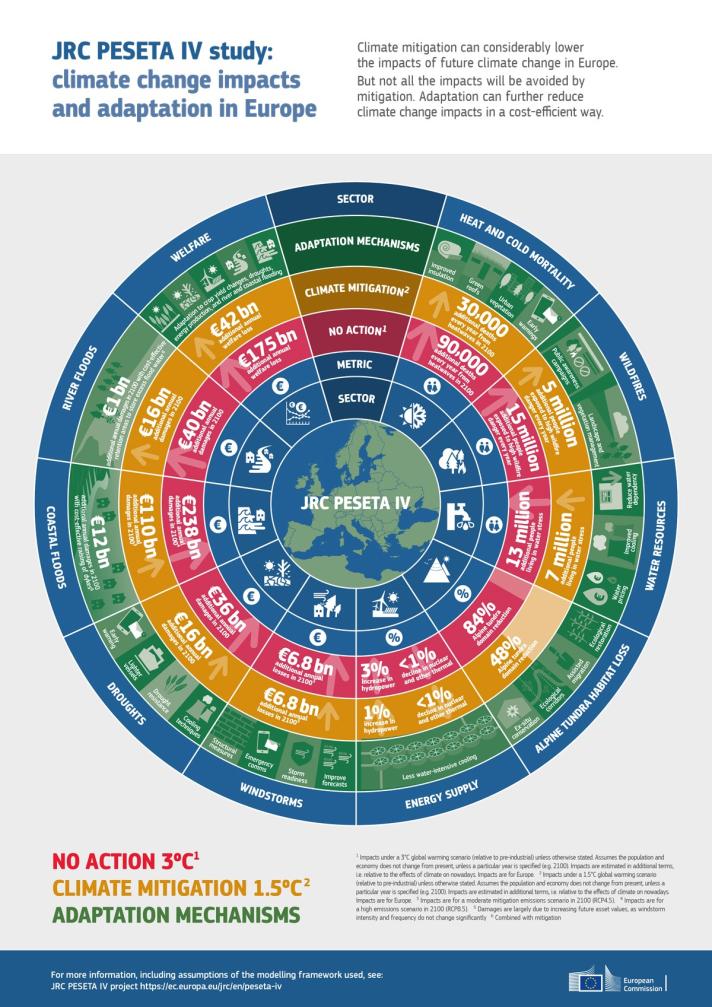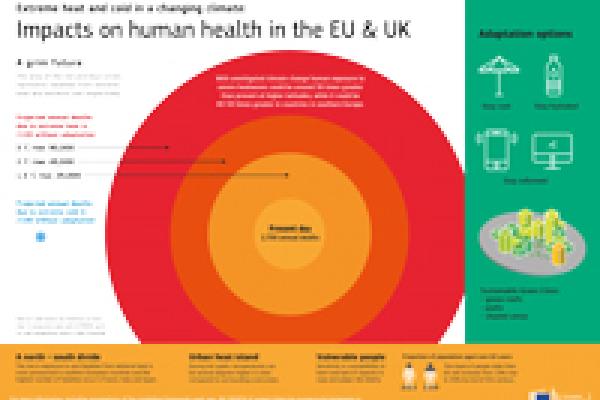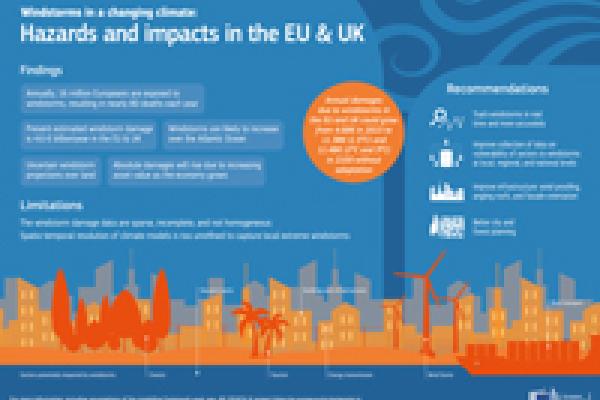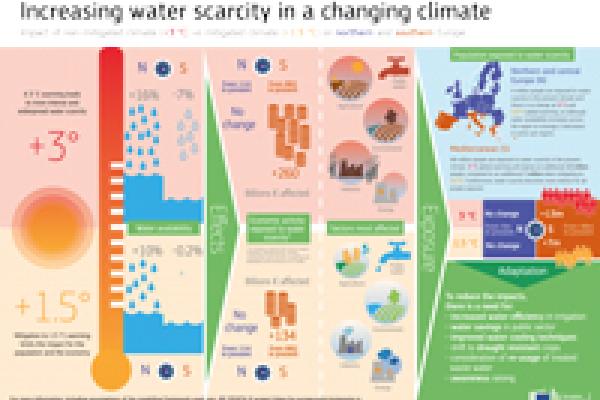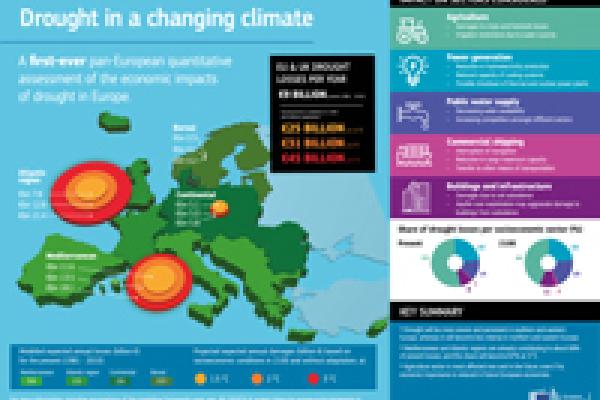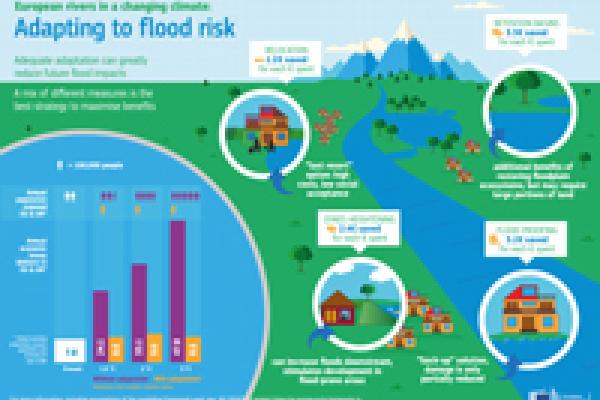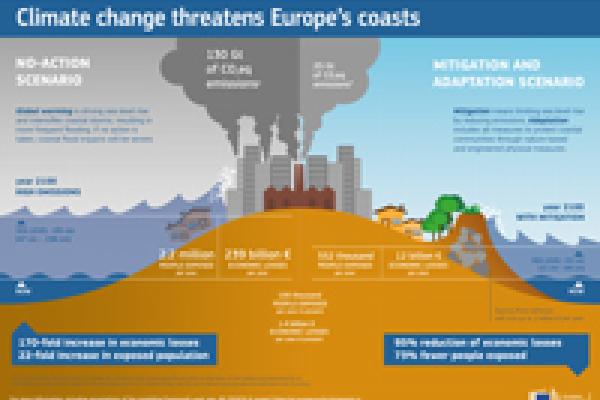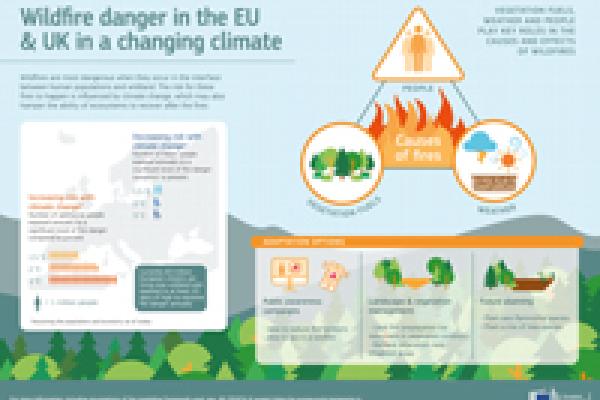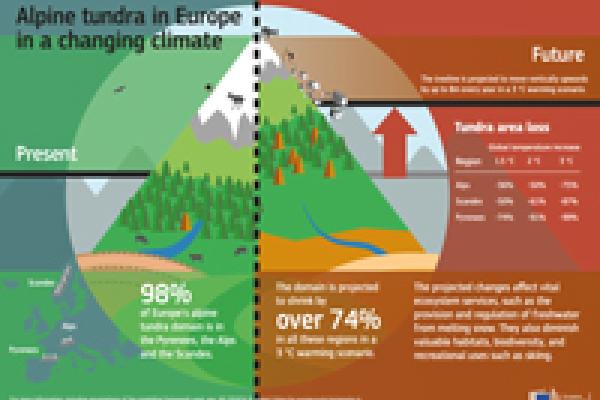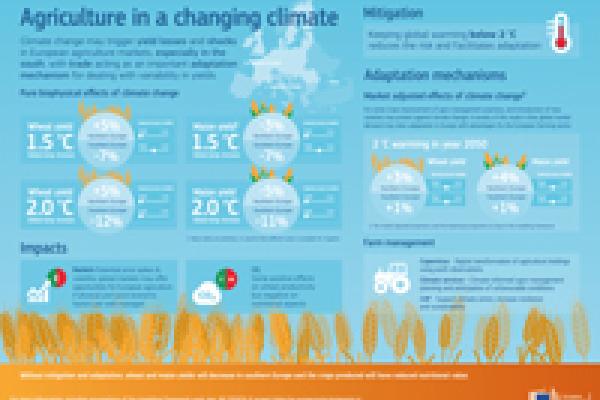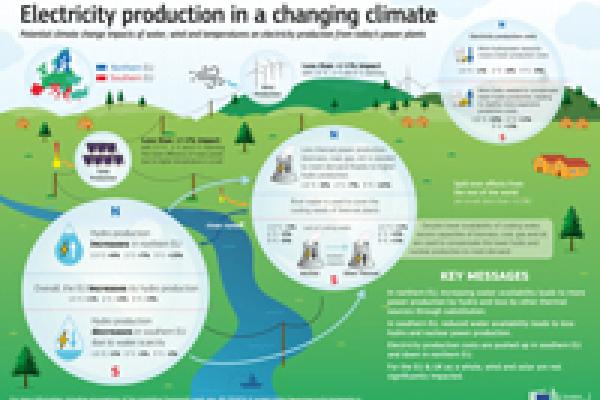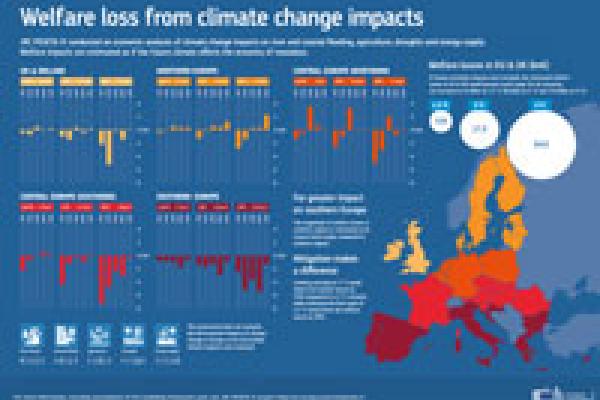Climate Change: what will happen if we do nothing?
Climate change is one of the biggest threats for humanity, seriously affecting people and nature. With the European Green Deal the EU strives for keeping our planet healthy and aspires to become the first carbon-neutral continent in the world by 2050. Despite this ambition and the target of the Paris Agreement on Climate Change to keep global warming well below 2°C compared to pre-industrial temperatures, greenhouse gas emissions worldwide are still growing. Global temperature is now around 1°C higher compared to the preindustrial era and if adequate mitigation strategies are not introduced, global warming could reach 3°C or more by the end of this century.
As part of the European Green Deal, the European Commission announced the adoption of a new, more ambitious EU strategy on adaptation to climate change. It was also acknowledged in the Commission proposal for the EU Climate Law as an essential part of efforts to increase the EU’s climate ambition for 2030 and 2050, as climate change will continue to create significant stress problems in Europe and beyond in spite of the mitigation efforts. An Open Public Consultation to inform the design of the new strategy (expected to be adopted by end-2020 or beginning-2021) is running until mid-August. The Inception Impact Assessment of the strategy is also available for consultation and feedback.
The PESETA IV study aims to better understand the effects of climate change on Europe, for a number of climate change impact sectors, and how these effects could be avoided with mitigation and adaptation policies.
Summary Cards
Summary cards provide an overview of the main facts and figures of each of the key areas of work of the PESETA IV project.
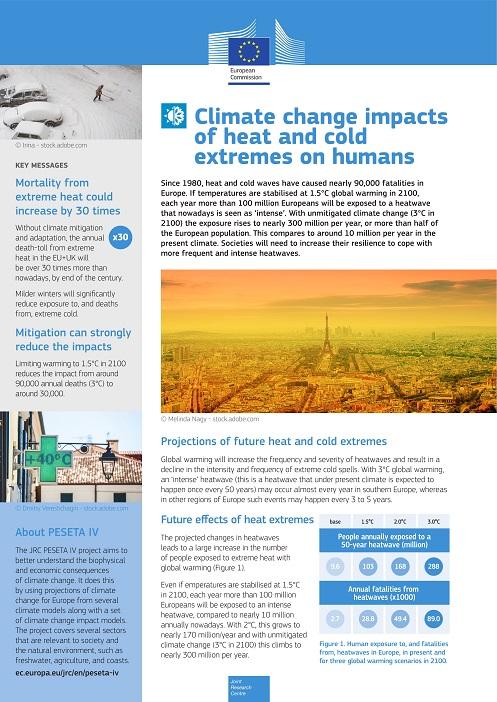
- Since 1980, heat and cold waves have caused nearly 90,000 fatalities in Europe. If temperatures are stabilised at 1.5°C global warming in 2100, each year more than 100 million Europeans will be exposed to a heatwave that nowadays is seen as ‘intense’.
- With unmitigated climate change (3°C in 2100) the exposure rises to nearly 300 million per year, or more than half of the European population. This compares to around 10 million per year in the present climate.
- Societies will need to increase their resilience to cope with more frequent and intense heatwaves.
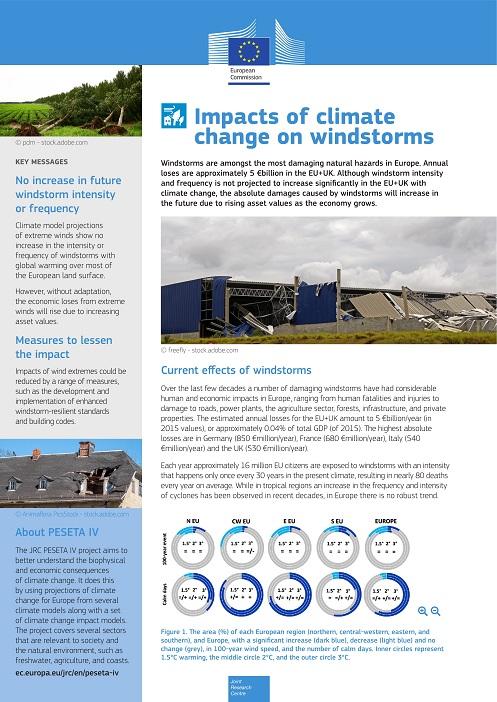
- Windstorms are amongst the most damaging natural hazards in Europe.
- Annual loses are approximately 5 €billion in the EU+UK.
- Although windstorm intensity and frequency is not projected to increase significantly in the EU+UK with climate change, the absolute damages caused by windstorms will increase in the future due to rising asset values as the economy grows.
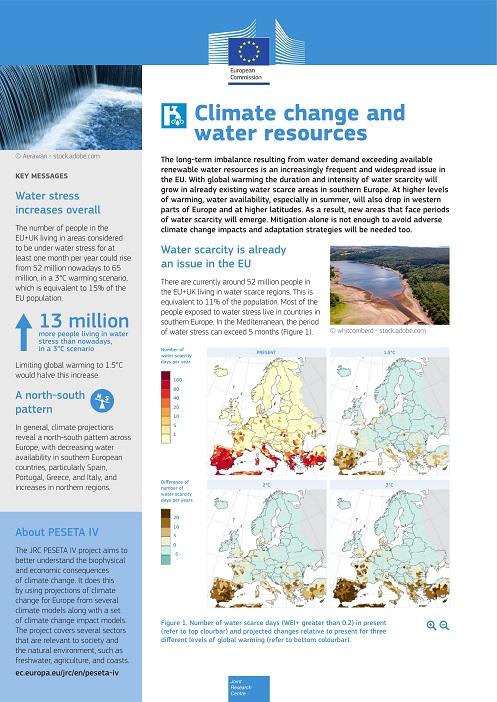
- The long-term imbalance resulting from water demand exceeding available renewable water resources is an increasingly frequent and widespread issue in the EU.
- With global warming the duration and intensity of water scarcity will grow in already existing water scarce areas in southern Europe. At higher levels of warming, water availability, especially in summer, will also drop in western parts of Europe and at higher latitudes. As a result, new areas that face periods of water scarcity will emerge.
- Mitigation alone is not enough to avoid adverse climate change impacts and adaptation strategies will be needed too.
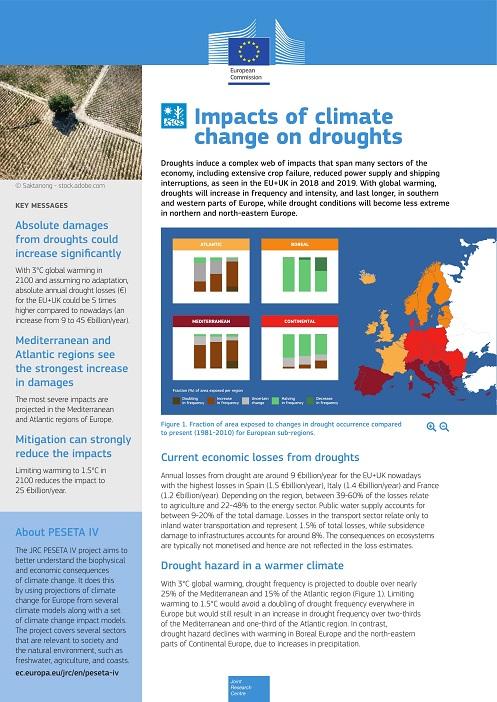
- Droughts induce a complex web of impacts that span many sectors of the economy, including extensive crop failure, reduced power supply and shipping interruptions, as seen in the EU+UK in 2018 and 2019.
- With global warming, droughts will increase in frequency and intensity, and last longer, in southern and western parts of Europe, while drought conditions will become less extreme in northern and north-eastern Europe.
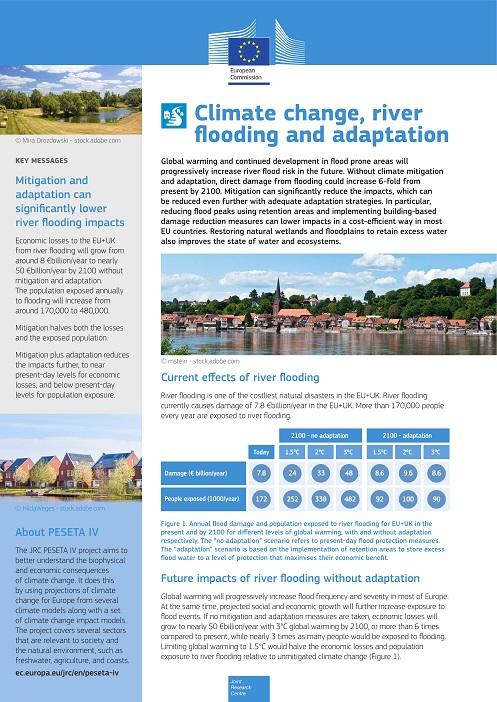
- Global warming and continued development in flood prone areas will progressively increase river flood risk in the future.
- Without climate mitigation and adaptation, direct damage from flooding could increase 6-fold from present by 2100.
- Mitigation can significantly reduce the impacts, which can be reduced even further with adequate adaptation strategies. In particular, reducing flood peaks using retention areas and implementing building-based damage reduction measures can lower impacts in a cost-efficient way in most EU countries. Restoring natural wetlands and floodplains to retain excess water also improves the state of water and ecosystems.
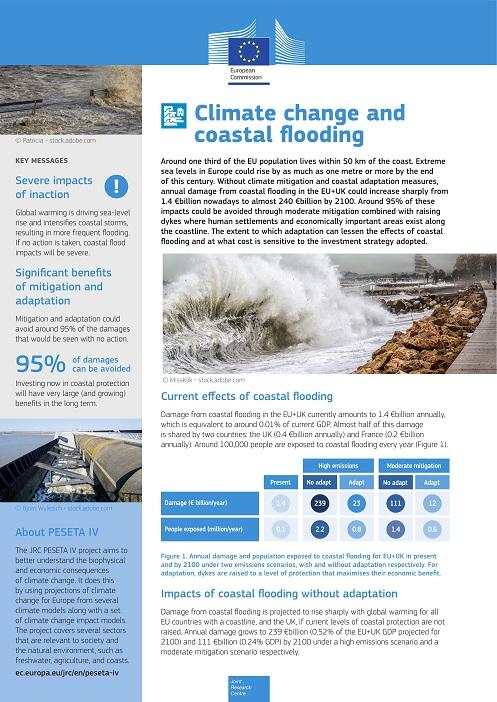
- Around one third of the EU population lives within 50 km of the coast. Extreme sea levels in Europe could rise by as much as one metre or more by the end of this century.
- Without climate mitigation and coastal adaptation measures, annual damage from coastal flooding in the EU+UK could increase sharply from 1.4 €billion nowadays to almost 240 €billion by 2100. Around 95% of these impacts could be avoided through moderate mitigation combined with raising dykes where human settlements and economically important areas exist along the coastline.
- The extent to which adaptation can lessen the effects of coastal flooding and at what cost is sensitive to the investment strategy adopted.
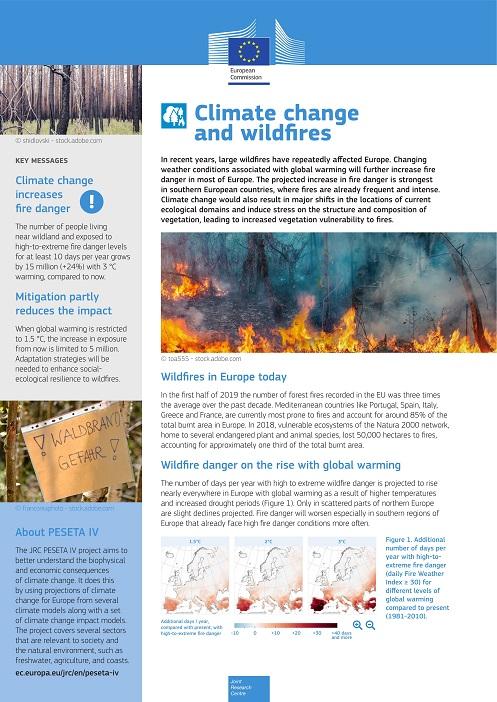
- In recent years, large wildfires have repeatedly affected Europe. Changing weather conditions associated with global warming will further increase fire danger in most of Europe.
- The projected increase in fire danger is strongest in southern European countries, where fires are already frequent and intense.
- Climate change would also result in major shifts in the locations of current ecological domains and induce stress on the structure and composition of vegetation, leading to increased vegetation vulnerability to fires.
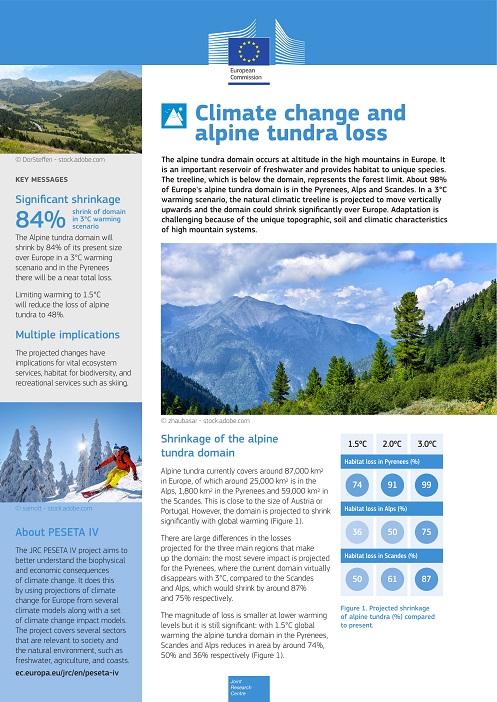
- The alpine tundra domain occurs at altitude in the high mountains in Europe. It is an important reservoir of freshwater and provides habitat to unique species. The treeline, which is below the domain, represents the forest limit. About 98% of Europe's alpine tundra domain is in the Pyrenees, Alps and Scandes.
- In a 3°C warming scenario, the natural climatic treeline is projected to move vertically upwards and the domain could shrink significantly over Europe.
- Adaptation is challenging because of the unique topographic, soil and climatic characteristics of high mountain systems.
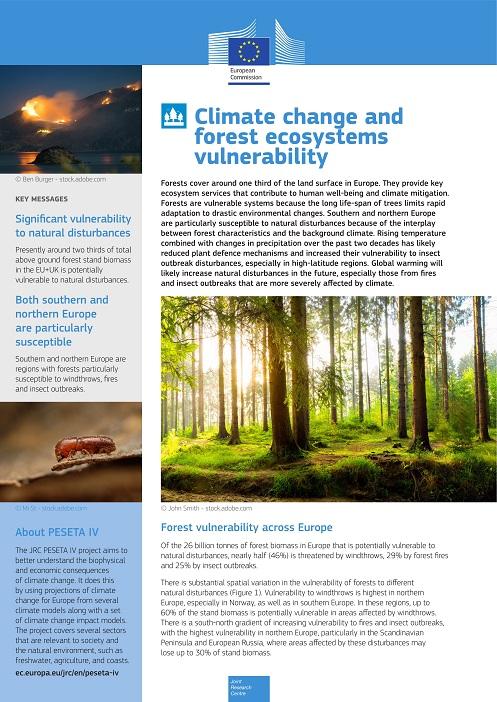
- Forests cover around one third of the land surface in Europe. They provide key ecosystem services that contribute to human well-being and climate mitigation.
- Forests are vulnerable systems because the long life-span of trees limits rapid adaptation to drastic environmental changes.
- Southern and northern Europe are particularly susceptible to natural disturbances because of the interplay between forest characteristics and the background climate.
- Rising temperature combined with changes in precipitation over the past two decades has likely reduced plant defence mechanisms and increased their vulnerability to insect outbreak disturbances, especially in high-latitude regions.
- Global warming will likely increase natural disturbances in the future, especially those from fires and insect outbreaks that are more severely affected by climate.
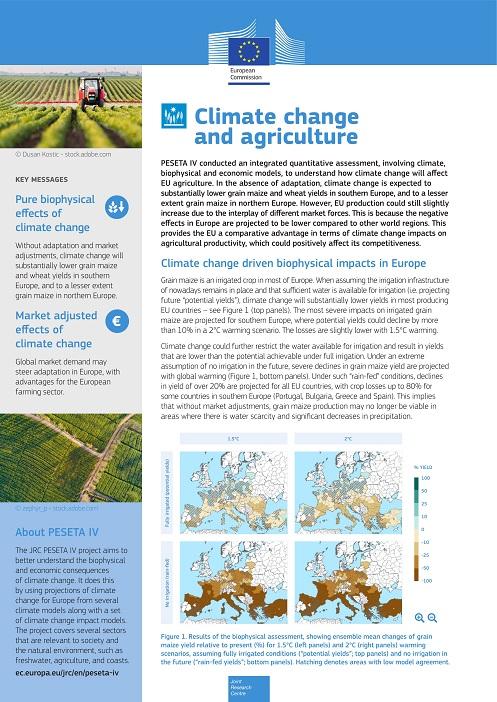
- PESETA IV conducted an integrated quantitative assessment, involving climate, biophysical and economic models, to understand how climate change will affect EU agriculture.
- In the absence of adaptation, climate change is expected to substantially lower grain maize and wheat yields in southern Europe, and to a lesser extent grain maize in northern Europe. However, EU production could still slightly increase due to the interplay of different market forces. This is because the negative effects in Europe are projected to be lower compared to other world regions. This provides the EU a comparative advantage in terms of climate change impacts on agricultural productivity, which could positively affect its competitiveness.
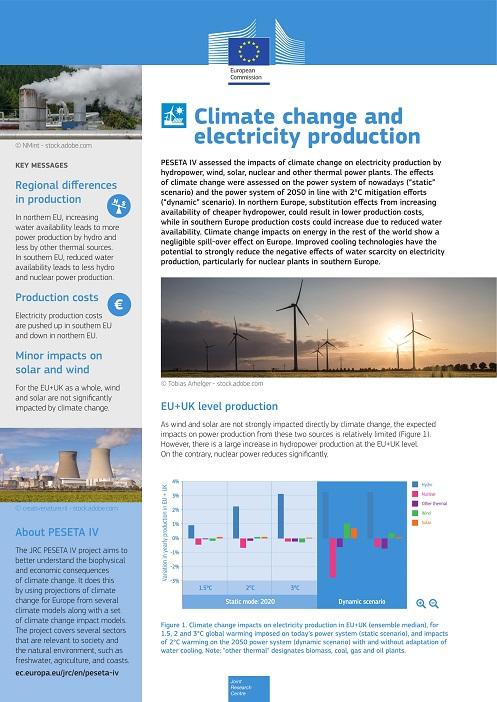
- PESETA IV assessed the impacts of climate change on electricity production by hydropower, wind, solar, nuclear and other thermal power plants.
- The effects of climate change were assessed on the power system of nowadays (“static” scenario) and the power system of 2050 in line with 2°C mitigation efforts (“dynamic” scenario).
- In northern Europe, substitution effects from increasing availability of cheaper hydropower, could result in lower production costs, while in southern Europe production costs could increase due to reduced water availability.
- Climate change impacts on energy in the rest of the world show a negligible spill-over effect on Europe. Improved cooling technologies have the potential to strongly reduce the negative effects of water scarcity on electricity production, particularly for nuclear plants in southern Europe.
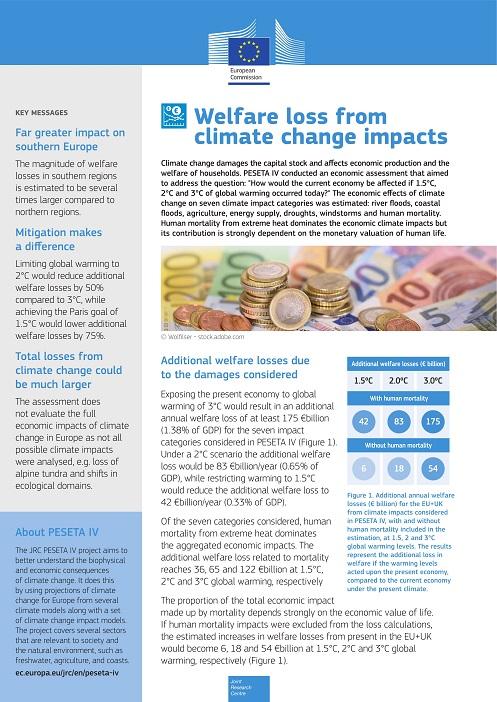
- Climate change damages the capital stock and affects economic production and the welfare of households.
- PESETA IV conducted an economic assessment that aimed to address the question: "How would the current economy be affected if 1.5°C, 2°C and 3°C of global warming occurred today?"
- The economic effects of climate change on seven climate impact categories was estimated: river floods, coastal floods, agriculture, energy supply, droughts, windstorms and human mortality. Human mortality from extreme heat dominates the economic climate impacts but its contribution is strongly dependent on the monetary valuation of human life.
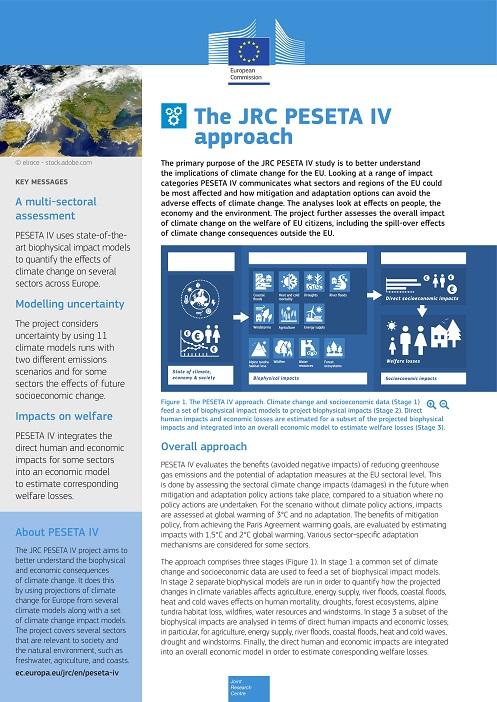
- The primary purpose of the JRC PESETA IV study is to better understand the implications of climate change for the EU.
- Looking at a range of impact categories PESETA IV communicates what sectors and regions of the EU could be most affected and how mitigation and adaptation options can avoid the adverse effects of climate change.
- The analyses look at effects on people, the economy and the environment. The project further assesses the overall impact of climate change on the welfare of EU citizens, including the spill-over effects of climate change consequences outside the EU.


